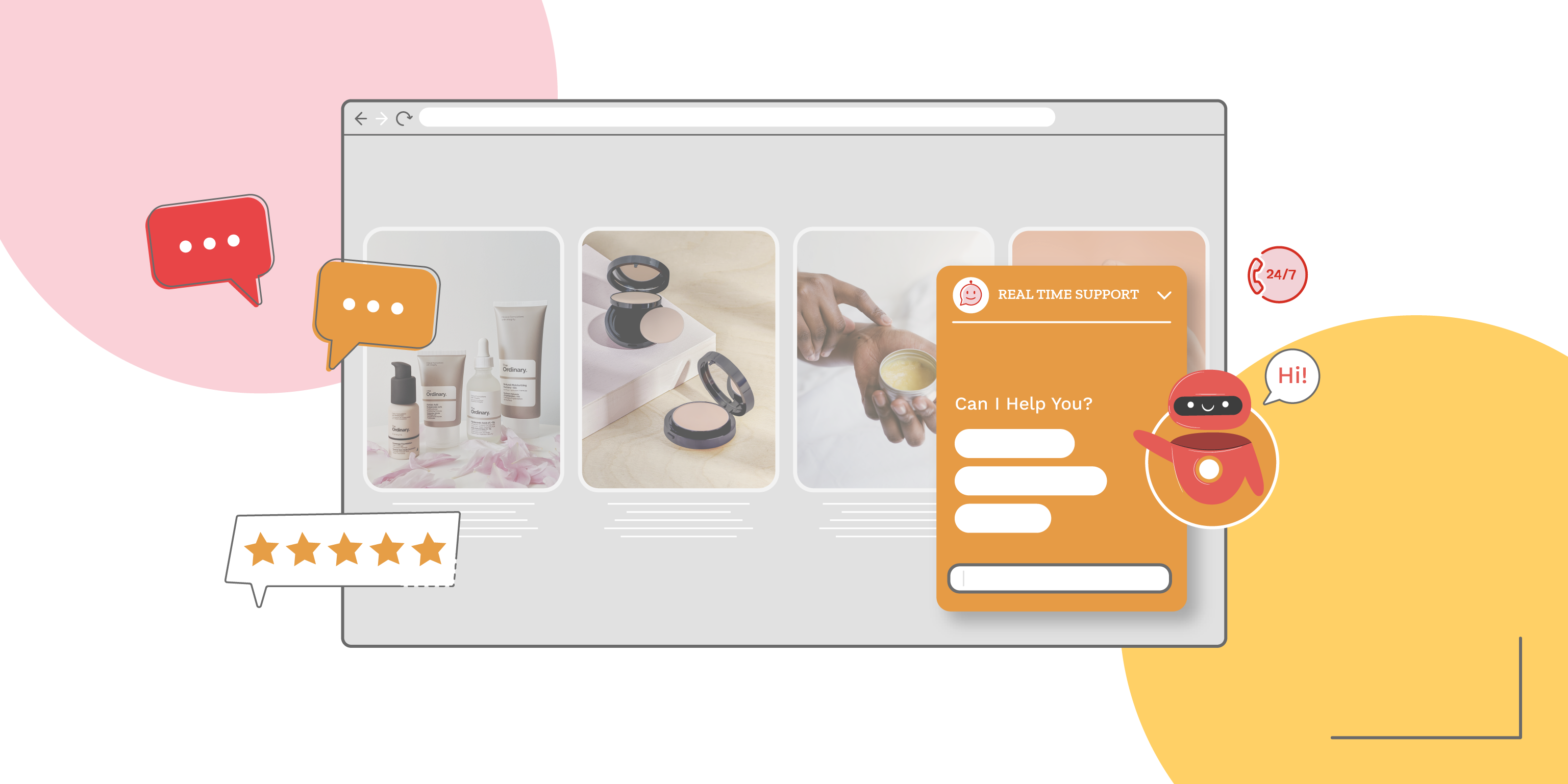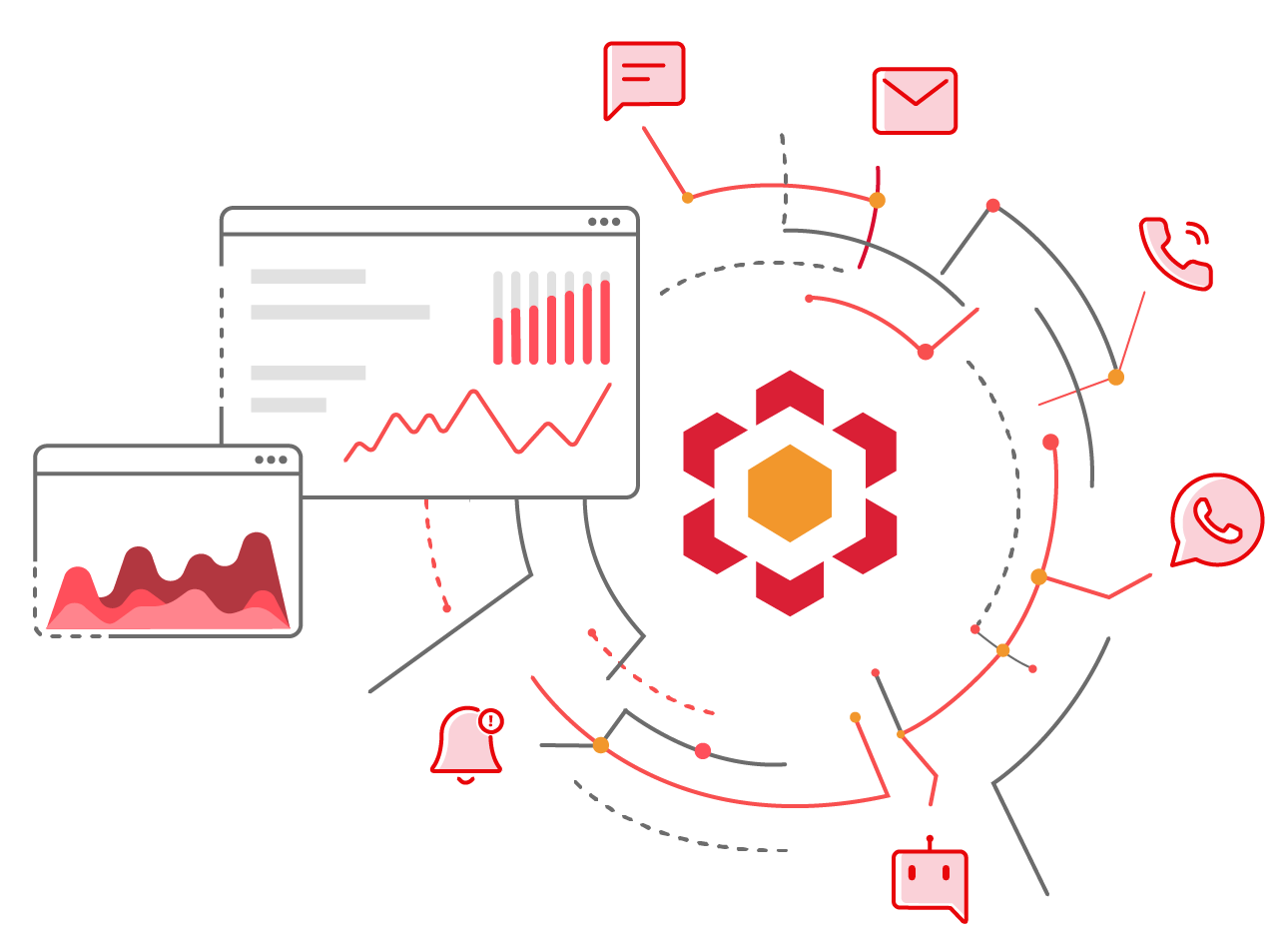
In today’s highly competitive business landscape, customer engagement and retention have become more important than ever. With customers having countless options at their fingertips, businesses need to find innovative ways to establish and maintain meaningful connections with their audience.
Conversational marketing, a strategy that focuses on real-time interactions and personalized experiences, has emerged as a game-changer for businesses seeking to revolutionize their customer relationships. By putting the customer at the center of communication, companies aren’t simply talking to their customers but engaging in meaningful conversations with them.
This approach allows companies to create unique customer experiences that foster loyalty and promote long-term retention. Embracing messenger chatbots and omnichannel marketing further enhances this customer-centric approach, enabling businesses to establish genuine connections and build lasting relationships.
How Does Conversational Marketing Differ From Traditional Marketing Methods?
Conversational marketing and traditional marketing are two approaches to reaching customers through different channels. While both focus on promoting products and services to generate revenue for businesses, they differ in their approach to messaging, audience targeting, and feedback collection.
Traditional marketing is a broad-based approach, typically relying on radio and TV ads, print media, and billboards to carry out a one-way message to a wide audience. In contrast, conversational marketing aims to create personalized communication between the customer and the business. Conversational marketing methods include chatbots, email, social media, and real-time messaging as key communication channels. This approach allows customers to engage with a business that understands their specific needs and, in turn, provides them with tailored responses and solutions.
Unlike traditional marketing that relies on surveys, focus groups, and sales data, conversational marketing gathers customer behavior data through AI-equipped chatbots. This data is analyzed to understand customer preferences, resulting in higher conversion rates from targeted campaigns.
The main advantage of conversational marketing over traditional marketing lies in its capacity to create tailor-made experiences, receive customer feedback, and nurture enduring relationships between customers and brands. This customer-first approach enables businesses to establish trust, stimulate valuable interactions, and enhance their overall customer experience strategy.
What are the Benefits of Using Conversational Marketing in Customer Service?
Implementing conversational marketing strategies can lead to significant benefits for businesses in terms of customer engagement and retention. Some key advantages include:
Improved Customer Engagement: Engaging customers in real-time conversations allows businesses to establish stronger connections and foster long-term relationships. A survey by HubSpot revealed that 82% of consumers rate an immediate response from companies as “important” or “very important,” demonstrating the value of conversational marketing in driving customer engagement.
Enhanced Customer Satisfaction: Conversational marketing can significantly improve customer satisfaction levels by providing personalized and timely support. Satisfied customers are more likely to become loyal brand advocates spreading positive word-of-mouth and contributing to long-term business success.
Increased Retention Rates: Conversational marketing helps businesses promptly address customer concerns and issues, minimizing the risk of losing customers to competitors. A study by Bain & Company found that a 5% increase in customer retention can lead to a 25% to 95% increase in profits, highlighting the importance of retaining existing customers.
Streamlined Customer Service: By automating routine customer interactions through chatbots and other AI-powered tools, businesses can reduce the workload on customer service teams allowing them to focus on more complex issues that require human intervention. This leads to a more efficient and cost-effective customer service operation.
Data-Driven Insights: Conversational marketing tactics such as chatbots and messenger marketing generate valuable data on customer behavior preferences and concerns. By analyzing this data, businesses can make informed decisions about product development, marketing campaigns, and customer service improvements, leading to better customer experiences and increased retention.
Real-World Examples of the Impact of Conversational Marketing on Customer Engagement and Retention
Conversational marketing has become a crucial tool for businesses seeking to improve their customer engagement and retention. Here are some real-world examples of how conversational marketing has helped companies improve customer engagement and retention and how you can implement these strategies in your business.
Marriot International
Marriot International is one of the largest hotel chains in the world, with over 7000 properties in 130 countries. With this large-scale operation, Marriot faced a challenge to provide personalized experiences to its customers. As a result, they implemented a chatbot on their website that helped them engage with customers at scale regardless of time zone or language. The chatbot helped customers book reservations and room service and even provided directions to local attractions. This innovation helped Marriot expand its customer reach and improve overall customer satisfaction.
Sephora
Sephora is a global beauty retailer with over 2500 stores worldwide. Sephora sought a way to personalize its customer experience and offer easy-to-use customer support. They implemented a chatbot to provide personalized customer recommendations based on their preferences and purchase history. This strategy helped Sephora increase customer retention and loyalty by providing customers with tailored beauty advice, product recommendations, and easy-to-use customer support.
Amway
Amway is a global leader in the direct selling industry. Over the years, Amway has sought innovative ways to engage its network of independent sellers and satisfy its customer base. Amway implemented a chatbot system that helped improve customer engagement and retention by providing personalized recommendations based on customer needs. Using a chatbot, Amway’s customers were able to get customized attention, such as recommending new products or offering advice on current products. The system was also used to provide guides to new sellers ensuring that customers had access to knowledgeable and helpful service. The implementation helped to drive sales as well as increase customer satisfaction.
Enhancing Customer Retention through Conversational Marketing
Implementing a conversational marketing strategy can help businesses create personalized experiences that not only retain customers but also convert them into brand advocates. Let’s explore how conversational marketing can enhance customer retention and foster long-term relationships with your customers.
Humanizing the Brand
Conversational marketing involves real-time communication between a business and its customer using chatbot live chat and messaging apps. This personalized communication humanizes the brand and creates a connection with the customers. Chatbots and live chat agents provide instant replies even outside of business hours, giving customers the impression that they are interacting with real people. The human touch in conversational marketing increases customers’ trust in a brand, leading to customer retention.
Building Trust
Trust is a crucial factor in customer relationships. Conversational marketing builds trust by addressing customers’ challenges and concerns in real time. With conversational marketing, you can quickly respond to customers’ inquiries, resolve their issues, and take appropriate actions demonstrating your business’s commitment to providing excellent customer service. Prompt resolution of issues not only builds trust; it also enhances the overall customer experience resulting in repeat business and customer retention.
Value-Added Services
Conversational marketing offers not only instant replies but also value-added services that can improve customer retention. For instance, chatbots can provide personalized recommendations based on customers’ preferences and previous purchases. These recommendations can be in the form of complementary product discounts or loyalty programs which increase the perceived value of your products and services. This, in turn, results in a higher customer retention rate.
Customer Feedback
With chatbots and live chat, businesses can gather feedback from customers on their experience with the brand, which helps organizations identify areas that require improvement. By acting on customer feedback, businesses show their customers that their opinions are valued, resulting in greater customer satisfaction and retention.
Tone of Voice
The tone of conversations in conversational marketing is an essential factor in enhancing customer retention. Adopting the right tone and language is crucial. The language should be professional yet conversational and tailored to the customer’s needs. Chatbots and live chat agents must display empathy and understanding, making customers feel they are dealing with a company that values their patronage.
Tips for Implementing Conversational Marketing for Effective Customer Engagement and Retention
Effective conversational marketing is crucial in enhancing customer engagement and retention. The right tools and techniques can enable businesses to create unique and personalized experiences for their customers.
Here are some tips on how to effectively implement conversational marketing for successful engagement and retention.
Identify your goals: Every successful conversational marketing campaign begins with identifying the goals and expected outcomes. You can plan the right approach to engage your customers by setting well-defined goals. For example, do you want to drive more sales, wish to improve customer retention, or seek to establish brand trust? The answers to these questions can help you create a plan focusing on your goals, ensuring you achieve your desired outcomes.
Choose the right tools: There are multiple tools available for conversational marketing, such as chatbots, live chat, and more. Each tool offers different features, customization options, and costs. The right tool for your business depends on your needs, budget, and customer base. For instance, chatbots are ideal for routine inquiries, while live chat provides real-time support. Choose the right tool based on the needs of your business and your customer base.
Provide live support: Conversational marketing is all about improving the customer experience and satisfaction. Therefore it’s essential to provide real-time support to your customers. This enables businesses to solve customer problems quickly, allowing the customer to move forward smoothly in their buying journey. In addition, establishing timely communication channels can ensure that the customer is always satisfied – and they’ll appreciate the level of care taken.
Prioritize customer experience: Conversational marketing’s true power lies in its ability to create unique and personalized customer experiences. Successful conversational marketing is about creating a customer-centric approach that prioritizes their needs. Providing targeted and personalized responses to customer inquiries helps build brand loyalty. The more transparent and personalized the experience, the more satisfied and loyal the customer.
Train staff: The staff tasked with communicating with customers should have excellent communication skills with a focus on interpersonal communication. They must understand that conversations should revolve around the customer. The staff should be trained to empathize, provide relevant and accurate information and ensure consistency across all communication channels. Creating a well-trained staff equipped with pertinent information can make a positive experience and leave the customer feeling valued.
Test and Optimize: Implementing a conversational marketing strategy is only the first step. After rolling out your campaign, your next step should be to test, analyze and optimize. Conduct A/B testing to identify messages that resonate better with customers and to improve areas that require improvement. By tracking conversations and analyzing customer feedback, you can refine your approach, iterate, and improve customer experiences for long-term success.
Conclusion
Conversational marketing has become essential for businesses aiming to thrive in today’s competitive landscape and foster lasting customer relationships. Kaleyra’s CPaaS platform offers a comprehensive toolkit for conversational marketing that goes beyond traditional approaches.
With our CPaaS platform, you gain access to various channels such as messaging (SMS, email, push notifications), chatbots, and WebRTC audio and video for real-time communication. This enables you to engage with your customers personally and target them with tailored messages.
Our chatbots automate routine inquiries, ensuring instant responses and guiding your customers throughout their journey. Additionally, our WebRTC capabilities facilitate interactive experiences, like virtual consultations and live support, allowing you to establish trust and forge deeper connections.
Incorporating our toolkit unleashes the full potential of conversational marketing, enhancing customer engagement, satisfaction, and retention. Our solution enables you to deliver personalized experiences, offer timely support, and build stronger customer relationships. This ultimately gives you a competitive edge in the market.
Kaleyra
The trusted cloud communication platform
Supercharge Your Communication!
Get in touch with our experts who strive hard to bring the very best in cloud communications technology to you.

